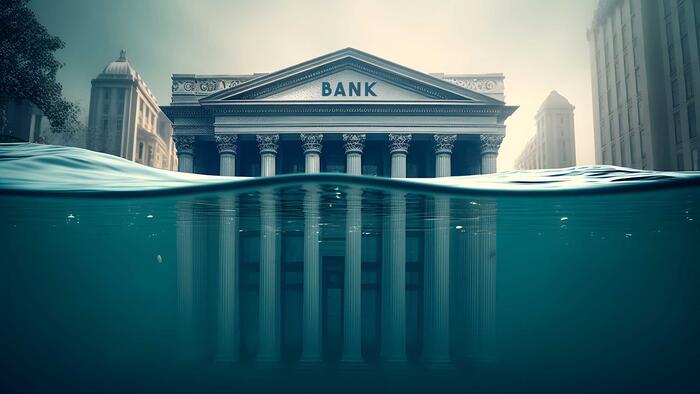
‘It’s spooky’: Stanford professor warns thousands of US banks are ‘potentially insolvent’
After the collapse of First Republic last week, the collapse of three other banks and the rise of a quarter of a point by the Federal Reserve, which made its 10th consecutive hike in an aggressive campaign to control the high inflation, a professor of finance at the Stanford Graduate School of Business. presented a dire warning that the regional banking dominoes are falling.
In a New York Times op-ed titled “Yes, You Should Be Worried About a Potential Banking Crisis. Here’s Why,” wrote Professor Amit Seru, “the fragility and the collapse of several high-profile banks is probably not an isolated phenomenon“. He said: “A damaging combination of rapidly rising interest rates, major changes in working patterns and the potential for recession could lead to a The credit crunch had not been seen since the 2008 financial crisis“.
Just in the last few months, Silicon Valley Bank, Signature Bank and First Republic Bank have failed. Their combined assets exceeded those of the 25 banks (when adjusted for inflation) that collapsed at the height of the financial crisis. While some pundits and policymakers believe Monday’s First Republic Bank resolution signals the industry’s turbulence is coming to an end, I think that may be premature. Shares of PacWest and Western Alliance fell on Thursday as investor fears spread. Adverse conditions have significantly weakened the ability of many banks to withstand another credit shock, and it is clear that a big one is already underway.
Rapidly rising interest rates create dangerous conditions for banks because of one basic principle: The longer the duration of an investment, the more sensitive it will be to changes in interest rates. When interest rates rise, the assets banks hold to generate a return on their investment fall in value. And because banks’ liabilities, such as their deposits, which customers can withdraw at any time, tend to have shorter durations, they fall less. Thus, increases in interest rates can deplete a bank’s own funds and risk leaving it with more liabilities than assets. It is therefore not surprising that the market value of the assets of the US banking system is about $2 trillion less than their book value suggests. When examining the entire pool of approximately 4,800 U.S. banks, the decline in equity value is more pronounced for smaller and medium-sized banks, reflecting their stronger bets on long-term assets..
In an interview with The Guardian, Seru was more specific about how many banks were burning through their capital buffers and were underwater. The estimate is shocking: Almost half of the 4,800 banks in the United States.
“It’s spooky. Thousands of banks are under water.
“We don’t pretend it’s just Silicon Valley Bank and First Republic. Much of the American banking system is potentially insolvent.”
Since monetary tightening works with long lags (9-12 months), many of the rate hikes over the past year have not yet filtered through to the real economy. In the coming quarters, the US banking system will face its toughest challenge yet, as tightening lending standards could lead to more breaks.
In Seru’s op-ed in the NYTimes, he noted, “There is another area of looming concern that could cause this panic: The commercial real estate sector.”
Commercial real estate loans, worth $2.7 trillion in the United States, they account for about a quarter of the average bank’s assets. Many of these loans are will expire in the coming yearsi refinancing them at higher rates naturally increases the risk of default. Rising interest rates also depress the value of commercial properties, especially those with long-term leases and limited rent escalation clauses, which also increases the likelihood of landlord default. In the Great Recession, for example, default rates rose to about 9 percent, rather than about 1 percent, as interest rates rose.
For Zerohedge readers, the dual crisis affecting regional banks and the commercial (office) real estate sector is not a new thesis. On March 21, we first suggested the coming turmoil in a note titled “”Nowhere to Hide in CMBS”: CRE Nuke Goes Off With Small Banks Accounting For 70% Of Commercial Real Estate Loans.” We’ve documented the crisis spreading from regional banks to the CRE space in numerous pieces (many of which can be found in our premium section).
Our latest note, with BofA strategist Michael Hartnett, highlights that “every Fed tightening cycle ends in crisis.”
The doomsday warning about the insolvency of a large number of US banks comes as JPMorgan CEO Jamie Dimon recently claimed: “The system is very, very strong.”
